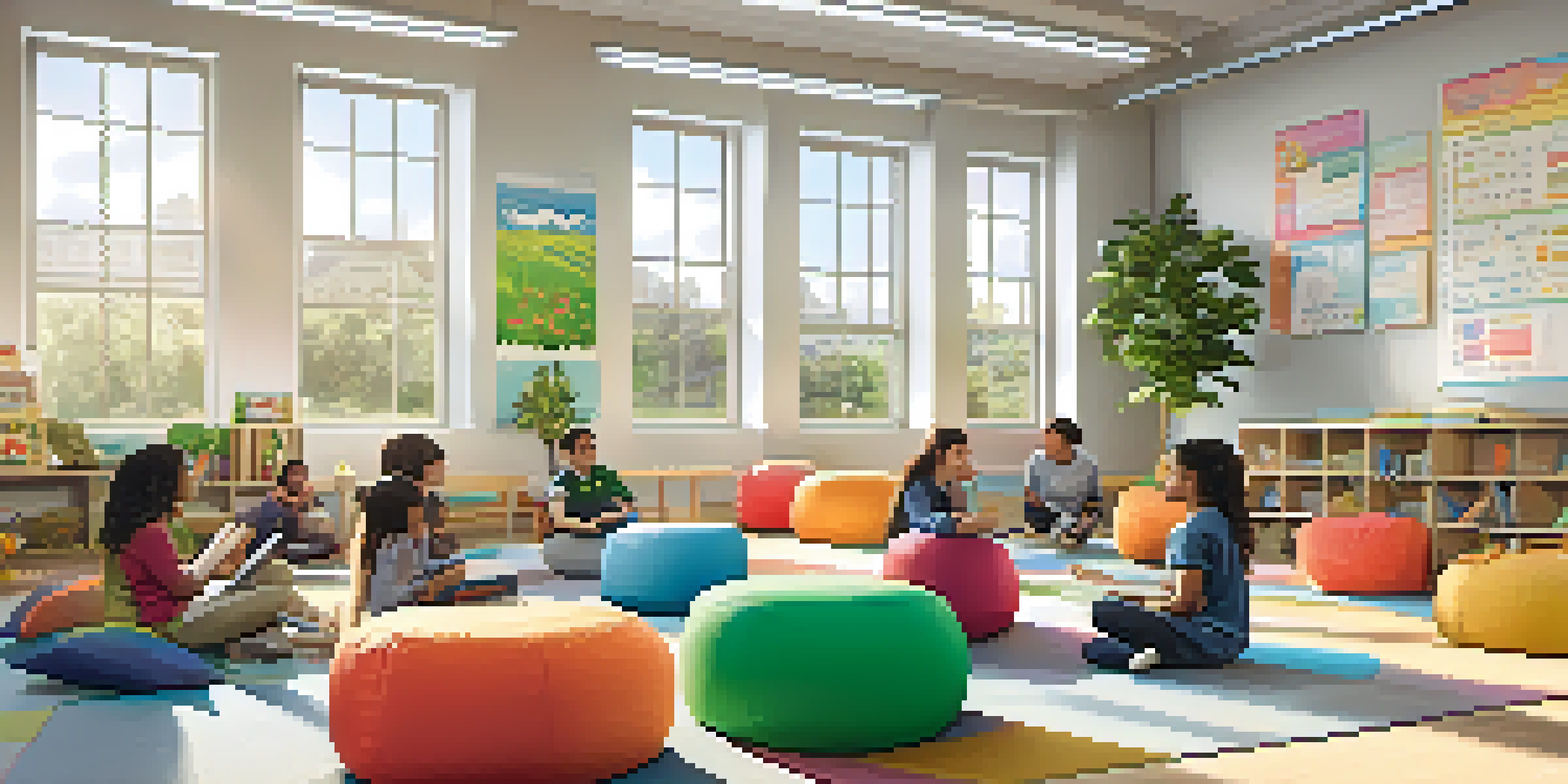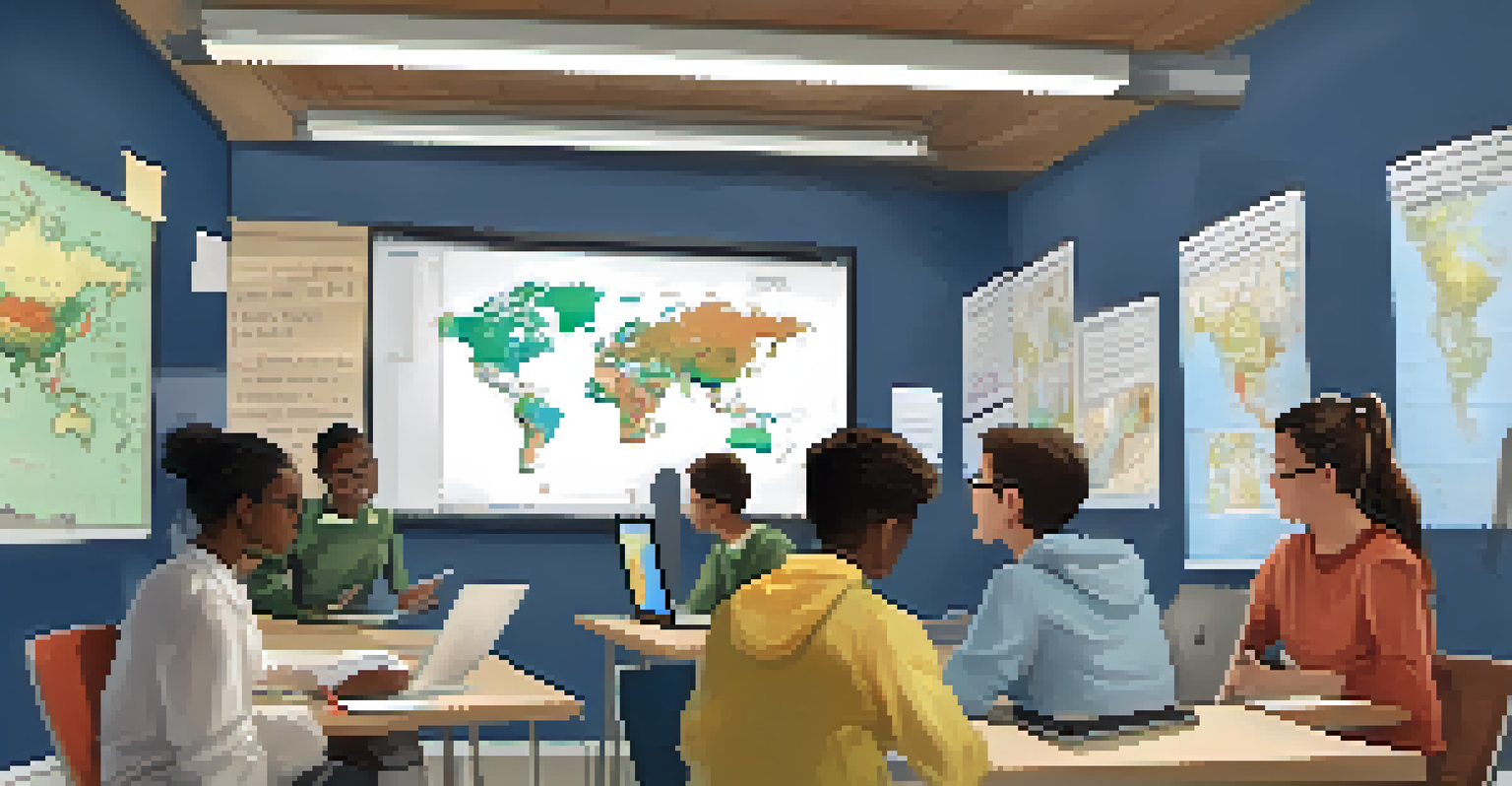Student-Centered Learning: Best Practices for Educators

Understanding Student-Centered Learning and Its Importance
Student-centered learning is an educational approach that prioritizes the needs and interests of students. This method encourages active participation, allowing learners to take control of their own educational journeys. By focusing on what students find engaging, educators can create a more effective and responsive classroom environment.
Tell me and I forget, teach me and I remember, involve me and I learn.
This approach differs significantly from traditional teaching models, which often emphasize rote memorization and passive learning. Instead, student-centered learning fosters critical thinking, problem-solving skills, and a love for learning. When students feel valued and respected, they are more likely to engage deeply with the material.
Moreover, student-centered learning promotes inclusivity by acknowledging diverse learning styles and cultural backgrounds. This adaptability not only enhances students' academic experiences but also prepares them for collaborative environments in the real world.
Creating a Supportive Learning Environment
A supportive learning environment is crucial for student-centered learning to thrive. This means fostering a space where students feel safe to express their thoughts and ideas without fear of judgment. Teachers can achieve this by establishing clear expectations and encouraging open communication.

One effective strategy is to incorporate flexible seating arrangements that allow students to choose their learning spots. This small change can make a big difference, as comfort often leads to increased focus and participation. Additionally, incorporating elements like group work and peer feedback further enhances collaboration.
Prioritize Student Engagement
Student-centered learning fosters active participation, critical thinking, and a genuine love for learning.
Lastly, recognizing and celebrating students' achievements, no matter how small, can boost their confidence and motivation. Acknowledgment fosters a sense of belonging, making students more invested in their learning journey.
Engaging Students Through Relevant Content
To truly engage students, educators must connect learning material to real-world applications. When students see the relevance of what they're learning, they are more likely to invest their time and energy into the process. This approach can transform mundane lessons into exciting projects that spark curiosity.
Education is not the filling of a pail, but the lighting of a fire.
For example, instead of simply teaching historical facts, teachers can incorporate project-based learning where students investigate a historical event's impact on their community. This not only makes learning more interesting but also helps students develop valuable skills like research and critical thinking.
Moreover, discussing current events or integrating technology can make lessons more relatable. By using tools like podcasts or interactive apps, educators can capture students' attention and encourage them to participate actively.
Incorporating Student Voice and Choice
Allowing students to have a say in their learning can significantly enhance their engagement. When students have choices—whether it’s selecting a project topic or choosing how to demonstrate their understanding—they feel a greater sense of ownership over their education. This sense of agency can lead to more meaningful learning experiences.
One effective approach is to implement regular check-ins, where students can voice their preferences and ideas. Educators can use these sessions to adjust lesson plans based on student feedback, creating a more tailored learning experience. This not only empowers students but also helps educators understand their needs better.
Create Supportive Environments
A supportive learning space encourages open communication, flexible seating, and recognition of student achievements.
Additionally, incorporating choice in assessment methods can cater to different learning styles. For instance, some students may excel in written assignments, while others may prefer visual presentations or hands-on projects. Providing options allows students to showcase their strengths.
Utilizing Technology for Enhanced Learning
In today's digital age, technology can play a pivotal role in student-centered learning. Online tools and resources can help educators craft interactive lessons that capture student interest. From virtual simulations to collaborative platforms, technology enables a dynamic learning environment.
For instance, using educational apps can facilitate personalized learning paths, allowing students to progress at their own pace. This adaptability is especially beneficial for diverse classrooms, where students may have varying levels of understanding and skills.
Moreover, incorporating technology encourages students to become digital citizens. By teaching them how to navigate online resources responsibly, educators prepare students for future challenges, blending learning with essential life skills.
Fostering Collaboration Among Students
Collaboration is a cornerstone of student-centered learning, as it mirrors real-world interactions and problem-solving. Group activities and collaborative projects not only enhance social skills but also encourage peer-to-peer learning. When students work together, they can share diverse perspectives and ideas.
For example, implementing cooperative learning strategies can help students tackle complex problems as a team. This approach fosters accountability, as each member contributes to the group's success. In turn, this builds a sense of community within the classroom, making learning more enjoyable.
Incorporate Technology Wisely
Utilizing technology enhances learning by providing personalized experiences and preparing students for the digital world.
Teachers can also promote collaboration by creating opportunities for students to lead discussions or present their findings to their peers. This not only builds confidence but also reinforces their understanding of the material.
Assessing Student Growth Effectively
Assessing student growth in a student-centered learning environment requires a shift from traditional testing methods. Instead of relying solely on standardized tests, educators should consider a variety of assessment techniques that reflect students' individual learning journeys. This holistic approach provides a clearer picture of student understanding.
Formative assessments, such as quizzes, reflections, or peer reviews, can offer valuable insights into student progress. These low-stakes assessments allow educators to adjust their teaching methods in real-time, ensuring that all students are grasping the material.

Additionally, incorporating self-assessment encourages students to reflect on their learning. By evaluating their own progress, students develop metacognitive skills that empower them to take charge of their education. This not only enhances their learning experience but also fosters lifelong learning habits.